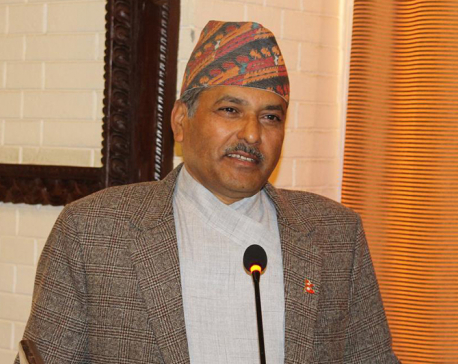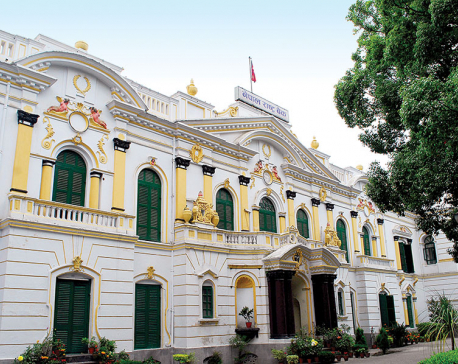
OR
Banks have hiked their lending rates. Does that have more cons than pros?
Published On: November 1, 2022 01:05 PM NPT By: Moktsya Poudyal

KATHMANDU, Nov 1: The new lending rates adopted by the commercial banks of the country that came into effect on Tuesday, October 18, demonstrate a rise from those employed previously. Creditors now have to pay as much as 18 percent interest rate for the money they borrow from banks. With soaring inflation and depleting foreign reserves, the increase in the lending rates reflects a liquidity crisis in the country that does not seem to have de-escalated with time.
Unlike deposit rates, lending rates can only be changed quarterly. Recent publications by the 26 commercial banks of the country depict an increase in their lending rates implemented from the third month of the fiscal year 2022/23. The change in the lending rates is the first witnessed in the current fiscal year. With an interest rate that is at 18.28 percent, the Bank of Kathmandu has the highest lending rate among the 26 banks while Rastriya Banijya Bank has the lowest at 12.86 percent. A bank’s lending rate is determined by adding a certain premium rate to its base rate. The average base rate of commercial banks in the last quarter of the previous fiscal year was 9.45 percent. It stands at 9.92 percent currently with only 10 banks having a base rate below the average.
After the previous fiscal year left the nation uncertain about the prospect of economic stability following the tumultuous period that was the COVID-19 pandemic, Nepal Rastra Bank (NRB), like most central banks, announced in July that it was going to adopt a contractionary monetary policy. The policy would set out to address current account and balance of payment (BOP) deficits which have caused depleting foreign exchange reserves in the country, threatening the liquidity in the banking system.
As a part of its contractionary policy, NRB increased the bank rate, the statutory liquidity ratio (SLR), and the cash reserve ratio (CRR). Increases in such ratios restrict the ability of the banks to supply money into markets, exerting pressure on the interest rates. Likewise, deposits do not seem to have grown much in the past months as well. A recent report of NRB covering the past two months disclosed that deposits at the banks and financial institutions (BFIs) decreased by 0.9 percent. This indicates that banks collected fewer amounts of money and hence have less to provide loans as.
“Lending rates are dependent on the demand and supply of funds. The supply of money in the banks has been compromised and the effects of which have been passed onto the lending rates,” commented Keshav Acharya, a former employee at NRB, on the increase in the lending rates.
“Restricting the demand for loans would also reduce imports and conserve foreign reserves which contribute to improving the balance of payment,” says Nara Bahadur Thapa, former executive director of NRB. The NRB report reveals that in the past two months, the BOP remained at a deficit of Rs 23.68 billion. This means that more money is flowing out of the economy than is coming into it. Improving the BOP would enable more cash flow into the economy. “We have to work on bringing our balance of payment into surplus, which would help bring more liquid assets into the country in the form of foreign currency,” mentioned Thapa.
“However, there are disadvantages of raising the interest rates too. It can decelerate economic activities which can adversely impact jobs and economic growth, adds Thapa. Raising interest rates will make borrowing more costly. Investors in the stock market would be discouraged from making big investments, weakening the stock market. Domestic businesses, especially the small and medium enterprises (SMEs), which were already struggling following the COVID-19 pandemic, will find it more difficult to access funds to continue operations. It may lead to some of them shutting down which may cause job losses. In other cases, the upsurge in the cost of production would propel the price growth of commodities, exacerbating inflation in the country. The inflation in the second month of the fiscal year 2022/23 remained at 8.65 percent, 5.15 percent higher than that in the same period last year.
The private sector and organizations like the Federation of Nepalese Chambers of Commerce & Industry (FNCCI) have displayed their dissatisfaction at the hike in the interest rate, claiming it would stifle the domestic industry. While even the finance ministry has asked banks to avoid hikes in the interest rates, people like Acharya perceive that if banks are to survive, they would need to charge higher rates.
“More than an appropriate measure, this is what circumstances have impelled,” voiced Thapa. He believes that had there been more foreign direct investment, foreign aid as anticipated, significant improvement in the tourism industry, and a rise in our exports, there wouldn’t have been such pressures on the interest rates.
With the 2022 Russian invasion of Ukraine elongating further, fears loom of a global recession. Countries like Nepal that are import-based and reliant on foreign aid are to be heavily impacted by phenomena like this. While there is already a great amount of strain in the external sector, Nepal must reduce its reliance on the external sector if it is to cushion itself from the potential damages of a global recession. The increase in interest rates comes as one such measure. “Since a hike in interest rates helps reduce imports, it also helps reduce pressure in the external sector,” said Thapa.
However, raising the interest rate wouldn’t be enough to reduce imports. “Import substitution on commodities such as fuel and foods are also necessary,” adds Acharya. Fuel and food, along with being among the commodities the country imports the most, also constitute the main causes of the current inflation in the economy. “Growing our own rice and paddy, and incentivizing the use of electric cars are among the means our country can employ that can save us a significant amount of imports,” asserted Acharya.
You May Like This

Increased govt expenditure and improved BoP necessary to ease liquidity crisis: NRB Governor Adhikari
KATHMANDU, Sept 3: Nepal Rastra Bank (NRB) Governor Maha Prasad Adhikari said the liquidity crisis with banks can be corrected only... Read More...

Central bank asks banks to to identify two more risks
KATHMANDU, Dec 3: Nepal Rastra Bank (NRB) has instructed bank and financial institutions (BFIs) to classify their risks into seven categories... Read More...

Banks not to issue new credit to automobiles, real estate
KATHMANDU, Feb 10: Commercial banks have decided not to issue new loans to finance unproductive sectors including automobiles and real estate. Read More...



Just In
- World Malaria Day: Foreign returnees more susceptible to the vector-borne disease
- MoEST seeks EC’s help in identifying teachers linked to political parties
- 70 community and national forests affected by fire in Parbat till Wednesday
- NEPSE loses 3.24 points, while daily turnover inclines to Rs 2.36 billion
- Pak Embassy awards scholarships to 180 Nepali students
- President Paudel approves mobilization of army personnel for by-elections security
- Bhajang and Ilam by-elections: 69 polling stations classified as ‘highly sensitive’
- Karnali CM Kandel secures vote of confidence















Leave A Comment